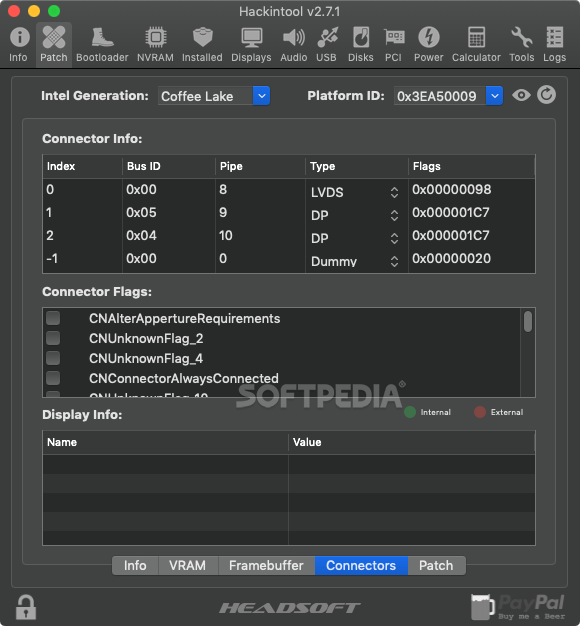

- #USING HACKINTOOL TO FIX AUDIO HOW TO#
- #USING HACKINTOOL TO FIX AUDIO MAC OS X#
- #USING HACKINTOOL TO FIX AUDIO MAC#
#USING HACKINTOOL TO FIX AUDIO MAC#
This is particularly valuable for working with remote machines connected through SSH or found elsewhere on the network, where it would be impossible to manually reset NVRAM with a keyboard shortcut sequence.Īnother common example where clearing nvram can be beneficial for troubleshooting purposes is when the Mac App Store loads a blank display that won’t populate with any content or store data. Many advanced Mac users know they can also reset the PRAM / NVRAM on boot with a key sequence, which can be helpful in troubleshooting some particular issues as well, and that approach removes everything from NVRAM similar to the -c flag during an actual reboot, which is perhaps easier for many users to remember. Whether or not you find this necessary or easy really depends on your skill level and your needs.
/CtrlWindowsAlt-7c0a4239875045b0a2a6727ddcaed784.jpg)

Note that arguments and options are executed in order. f set firmware variables from a text file x use XML format for printing or reading variables For those interested in learning more about this powerful command, the man page for nvram is quite helpful, as is the basic –help flag to show other syntax options:
#USING HACKINTOOL TO FIX AUDIO MAC OS X#
The nvram command has other uses as well for advanced users, from settings like disabling the startup boot chime sound on a Mac to always booting into verbose mode in Mac OS X or even enabling safe boot mode from the terminal for remote management or a headless/keyboardless Mac. Nvram -d SystemAudioVolume Going Further with nvram Modifications To be more specific, you can also target a set nvram variable for removal with the -d flag:įor example, to clear the system audio setting from nvram: Deleting Specific NVRAM Variables on Mac OS X

To delete all nvram variables just use the following syntax:įor changes to take effect, you must reboot the Mac, thus unless you’re doing something else you may want to just initiate a reboot from the command line while you’re there. The next most useful trick is to be able to clear out NVRAM with the same command string.
#USING HACKINTOOL TO FIX AUDIO HOW TO#
How to Clear All NVRAM from the Command Line in Mac OS X This will display the output in XML format, which is much more readable than the default format, which is read with the -p flag: Issue the following command to print out all current NVRAM contents: To get started, launch the Terminal, found in /Applications/Utilities/ and issue the following commands, depending on your desired objective: How to View All NVRAM Contents on Current Mac This probably goes without saying, but aside from listing the nvram contents, users should absolutely not delete or clear nvram variables if they don’t know exactly what they’re doing and why.


 0 kommentar(er)
0 kommentar(er)
